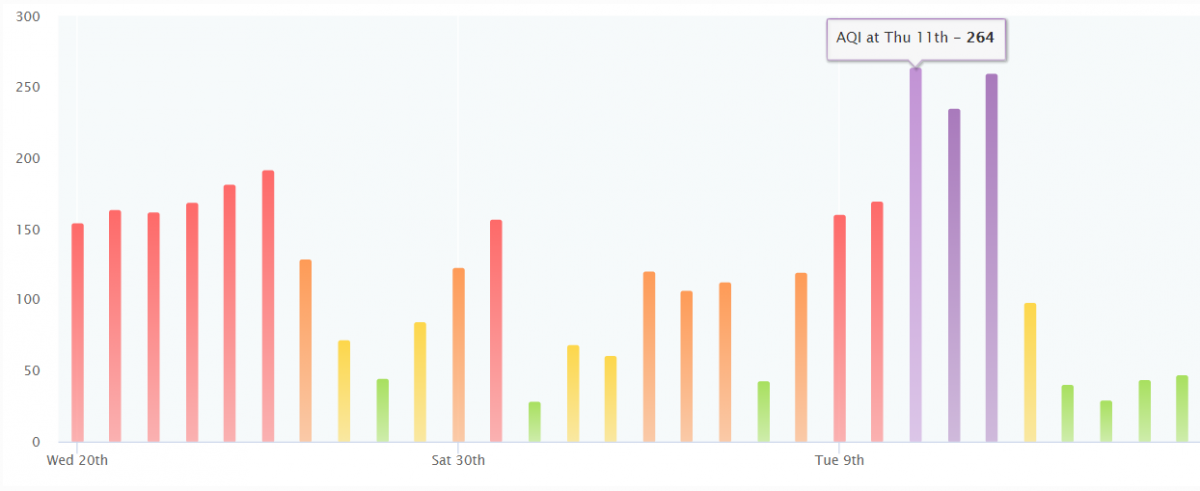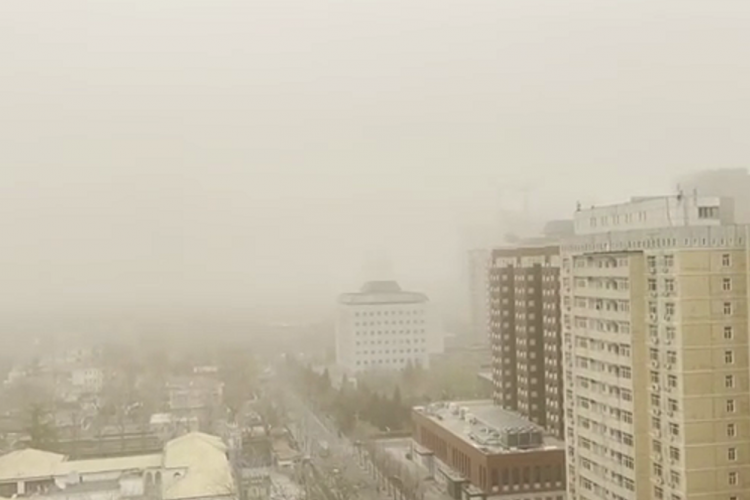Fireworks Were Banned, So What Was With the CNY Smog?
Before fireworks were restricted to outside the Fifth Ring Road, an opaque haze falling on the capital over the Spring Festival holiday was an inevitability that the few who stuck around were bound to face. This year, however, with the ban in effect, Beijingers were looking forward to clearer skies over the break – but that, it turns out, was wishful thinking.
Granted, the Air Quality Index (AQI) did not reach anywhere near the levels of the 2015 Spring Festival, when PM 2.5 levels reached 1,000 particles per cubic meter. But here in 2021, we’ve become accustomed to a different standard of air quality – so while an AQI of 264 would have been just another Thursday a few years back, it was somewhat unexpected when that number popped up on Feb 11 this year.
This haze, composed of relatively high concentrations of PM 2.5, PM 10, and carbon monoxide, then hovered around for a couple of days before largely dissipating by Valentine's Day.

So, what exactly happened? It’s true that this is not the first leap above the 200 mark in recent months, but the occurrence was rare enough that chalking it up to mere chance – happenstance of “atmospheric conditions” as the Beijing News put it – is a bit of a stretch, considering how nicely the bump lined up with the start of the holiday. Many readers may have also heard a few pops and crackles within the Fifth Ring, but a few cheeky rule breakers here and there are not enough to explain the rise in AQI within urban Beijing.
It’s important to remember that for a while now, most air pollution in urban Beijing has actually blown in from the suburbs, where coal-burning is subject to less regulation than within the city proper. Combined the fact that more Beijingers stayed home this year (thus using more electricity) with the barrage of firecrackers in the suburbs, and voila, Spring Festival is bound to see a bit of smog.
To be more precise, a report from the Ministry of Ecology estimated that up to 40 percent of air pollution in the Beijing-Tianjin-Hebei area over the holiday was the result of fireworks. In terms of the makeup of the PM 2.5, the fireworks resulted in up to 30 times more potassium ions and magnesium ions.
In all, the lesson here is that the firework ban does not make Beijing immune from air pollution over the Chinese New Year. Assuming that COVID-19 is all sorted out by next year (which it had better be) then be sure to make travel plans for the 2022 Spring Festival.
READ: The Numbers Are In: 2020 Was the Best Year on Record for Beijing Air
Images: Tencent, IQAir
Related stories :
Comments
New comments are displayed first.Comments
![]() Sikaote
Submitted by Guest on Fri, 02/19/2021 - 07:38 Permalink
Sikaote
Submitted by Guest on Fri, 02/19/2021 - 07:38 Permalink
Re: Fireworks Were Banned, So What Was With the CNY Smog?
"Assuming that COVID-19 is all sorted out by next year (which it had better be)" (unquote)
It all depends on whether enough small-medium businesses can be permanently closed (thereby concentrating wealth in few enough hands), and on whether enough liberties can be permanently revoked. Once the world has been fitted to a very short choke chain, yeah. We can maybe be let outside to play a little. Oh, the virus is real enough. Excessively real is what is being and will be done to capitalize on it.
Yesterday I went to the hospital to get my meds. The doctor asked me why I don't come every week like I used to. I told her that coming to the hospital seemed riskier these days. She asked, "how so".

![]() Sikaote
Submitted by Guest on Thu, 02/18/2021 - 14:36 Permalink
Sikaote
Submitted by Guest on Thu, 02/18/2021 - 14:36 Permalink
Re: Fireworks Were Banned, So What Was With the CNY Smog?
Fireworks Were Banned, So What Was With the CNY Smog?
I read the article and I still don't know what was with the smog.

Validate your mobile phone number to post comments.







